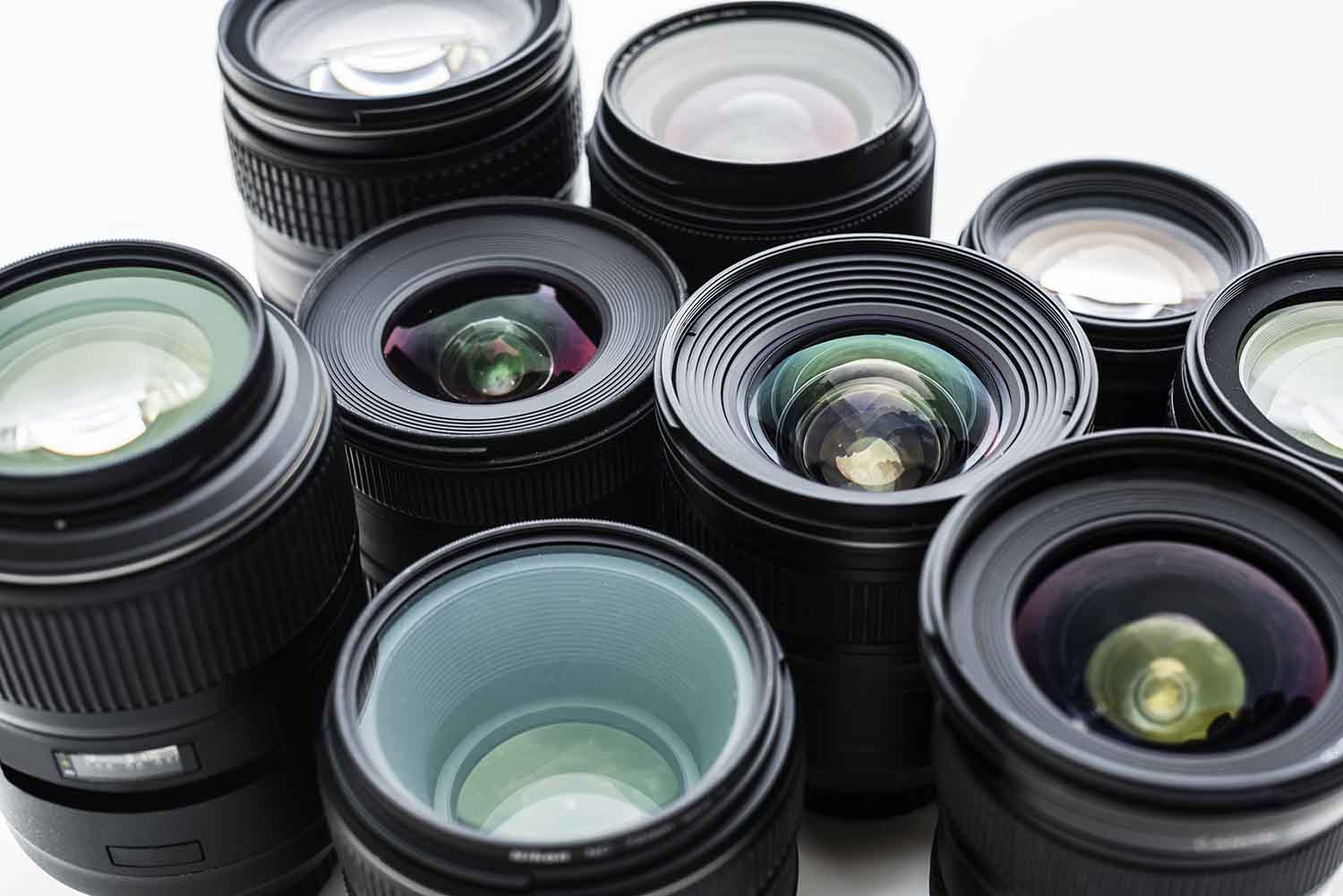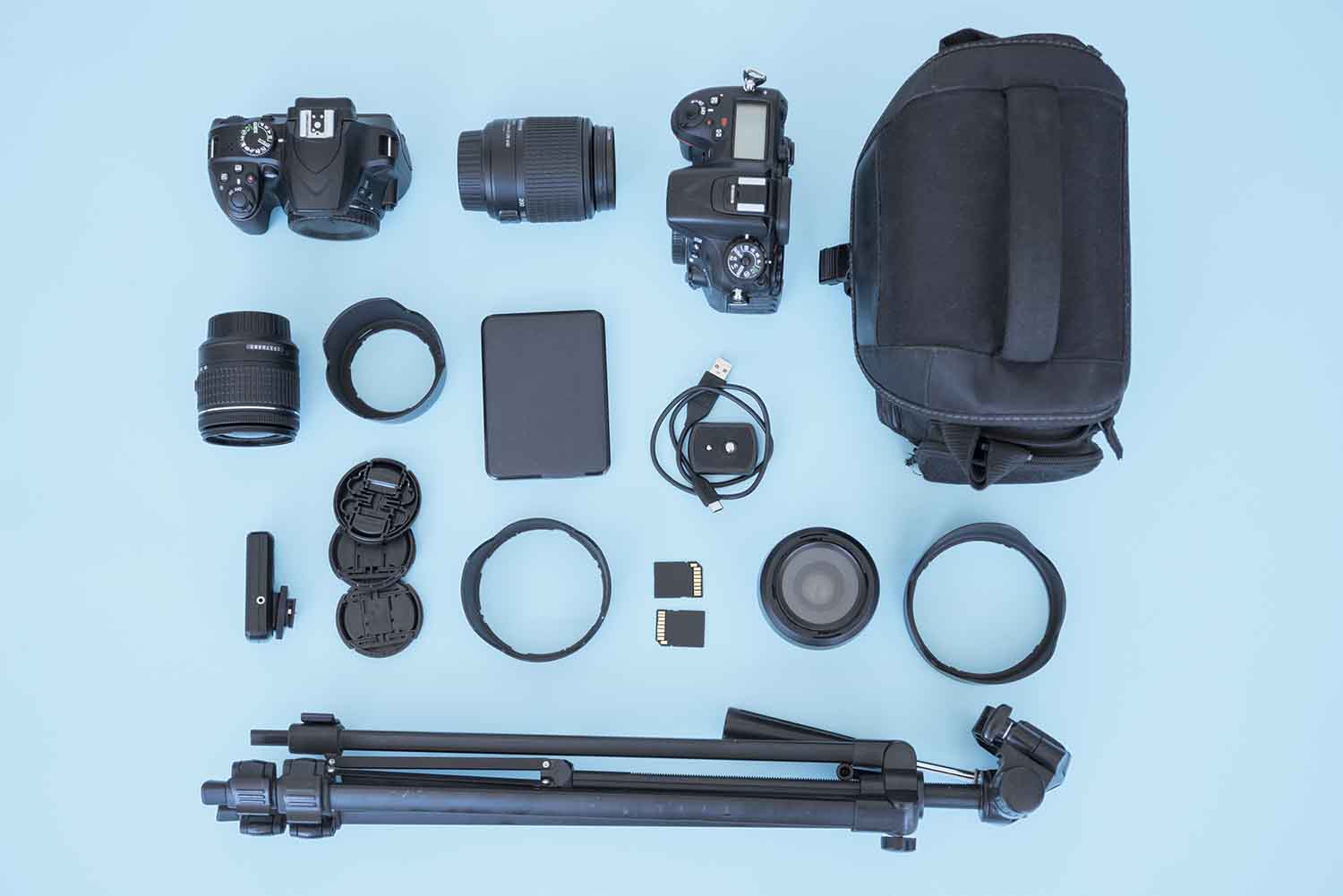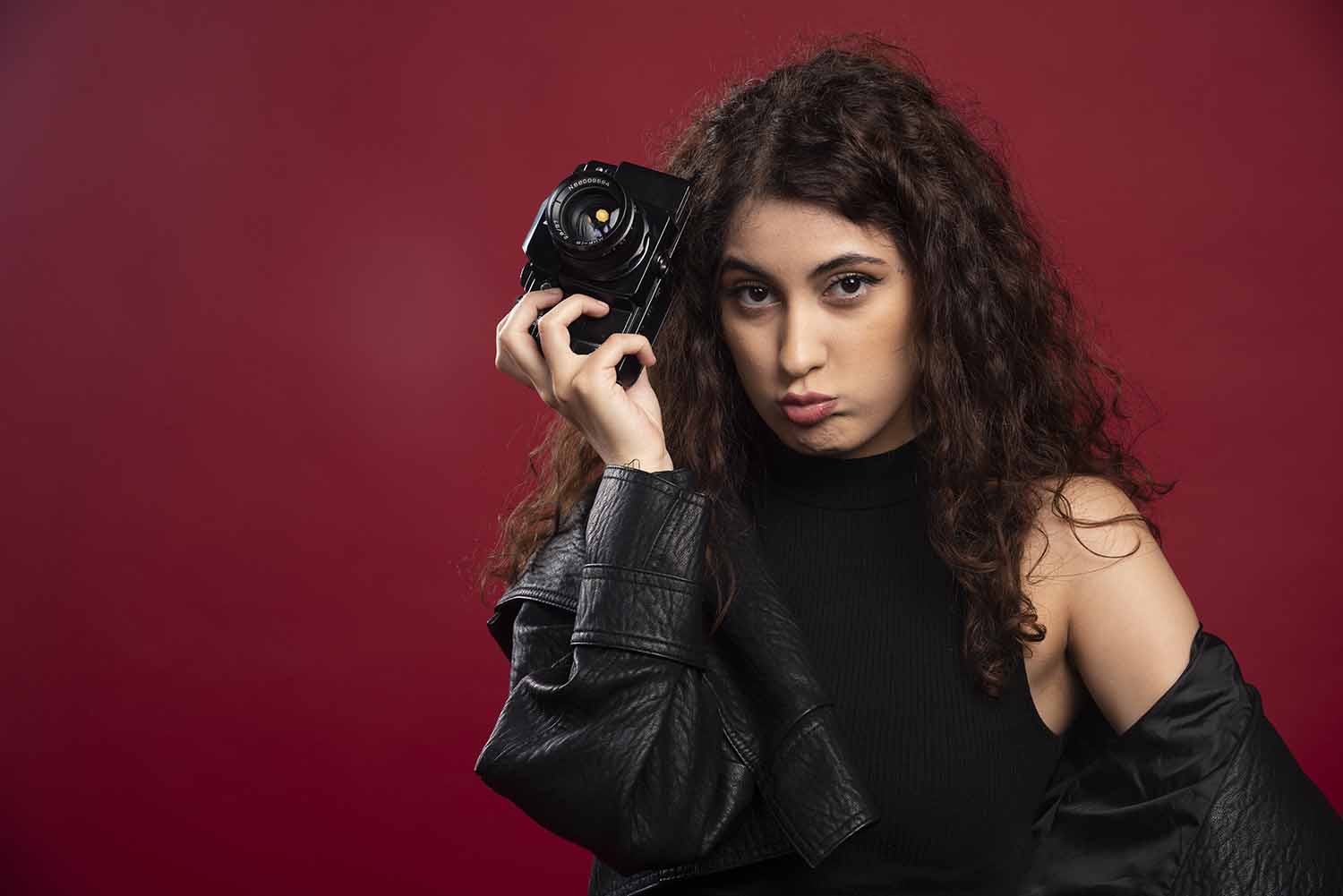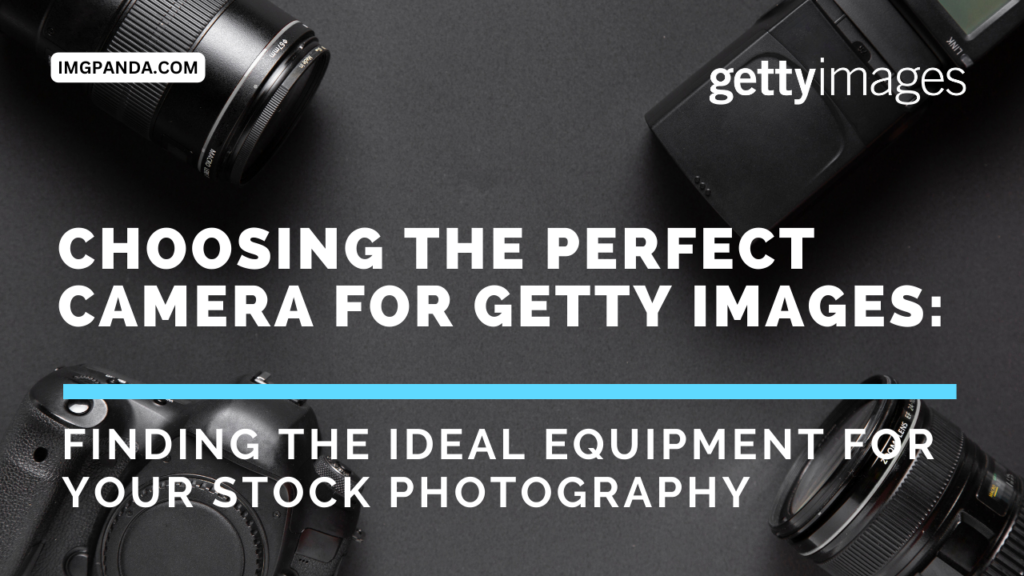Introduction
In the fast-paced world of digital media, stock photography has become an integral part of marketing, advertising, and creative projects. Getty Images, one of the leading stock photography agencies, offers a vast collection of high-quality images that cater to the diverse needs of clients worldwide.
Aspiring photographers and seasoned professionals alike are eager to contribute their work to this global platform, but standing out in such a competitive space requires more than just a keen eye for composition and subject matter. The key to success lies in the equipment you use to capture those stunning images. Choosing the perfect camera for your Getty Images portfolio is an essential step that can significantly impact your acceptance rate and, ultimately, your earnings.
Also Read This: Tips for shooting professional-quality product photos
Understanding Getty Images and Stock Photography
Understanding Getty Images and the world of stock photography involves recognizing the essential aspects that make it a valuable resource for both photographers and buyers:
| Aspect | Getty Images | Stock Photography |
|---|---|---|
| Definition | A global provider of visual content, offering a vast collection of images, videos, and music for licensing. | The practice of capturing and licensing images for commercial use through stock photography agencies. |
| Purpose | Serves as a platform for photographers to sell their work to a diverse range of clients worldwide. | Provides businesses and individuals with access to high-quality images without the need for custom photography. |
| Content Diversity | Offers a wide range of images covering various themes, subjects, and styles. | Encompasses a diverse array of visual content, including photos, videos, illustrations, and more. |
| Quality Standards | Maintains strict guidelines for image quality, composition, and technical aspects. | Requires photographers to meet quality standards to ensure images are commercially viable. |
| Licensing Options | Provides different licensing models, such as royalty-free and rights-managed, to accommodate various usage needs. | Offers licensing options with different usage rights and restrictions to cater to different client requirements. |
| Contributor Community | Relies on a global network of photographers and content creators who contribute their work. | Involves a wide community of contributors from around the world, adding to the diversity of content available. |
| Compensation | Pays photographers through royalty payments based on image usage. | Allows photographers to earn royalties based on the frequency and type of image use. |
| Buyer Benefits | Offers buyers access to a vast library of high-quality visual content. | Provides buyers with a broad selection of images for various projects and campaigns. |
| Photographer Benefits | Provides photographers with a platform to showcase and monetize their work. | Enables photographers to monetize their skills and reach a broader audience. |

Also Read This: The Top 5 Ways to Optimize Your Twitter Profile for Maximum Impact
Factors to Consider When Choosing a Camera
Choosing the right camera is a critical decision for photographers, especially when aiming to contribute to platforms like Getty Images and create high-quality stock photography. Several factors should be taken into consideration before making a camera purchase.
| Factor | Consideration |
|---|---|
| Sensor Size and Resolution | Larger sensors for better image quality; higher resolution for more detailed images |
| Low-Light Performance | Good high-ISO performance for shooting in low-light conditions |
| Dynamic Range | Wider dynamic range for better exposure flexibility and image quality |
| Megapixels and File Size | Higher megapixels for large prints; consider storage and processing requirements |
| Autofocus Capabilities | Fast and accurate autofocus for sharp images, especially with moving subjects |
| Burst Mode and Frame Rate | Higher burst mode for capturing action shots and fleeting moments |
| Video Capabilities | Consider camera's video capabilities, resolution, and video autofocus |
| Lens Compatibility | Ensure compatibility with a variety of lenses for different photography needs |
| Lens Selection | Consider investing in high-quality lenses for better image results |
| Ergonomics and Handling | Choose a camera with comfortable and intuitive controls |
| Weather Sealing and Durability | Weather sealing and robust build for shooting in adverse conditions |
| Battery Life | Adequate battery life for extended shooting sessions or travel |
| Price and Budget | Find a camera that fits your budget and offers the desired features and performance |
This video explains about Choosing the Perfect Camera for Getty Images:
Also Read This: Downloading 123RF Images without Watermark: Quick Tips
Also Read This: Insights into Popular and Profitable Content: Alamy’s Best Selling Images
Selecting the Right Camera Type
DSLR Cameras
DSLR Cameras are Digital Single-Lens Reflex cameras equipped with optical viewfinders. They are an excellent choice for photographers who prioritize image quality, versatility, and access to a vast lens ecosystem. DSLRs offer outstanding image quality, fast autofocus, and a wide range of lenses to suit various photography styles. However, they tend to be bulkier and heavier compared to other camera types, and their optical viewfinders lack real-time exposure preview.
Mirrorless Cameras
On the other hand, Mirrorless Cameras are compact cameras that lack optical viewfinders, making them lighter and more portable. They offer high image quality and interchangeable lenses, striking a balance between image quality and portability. The electronic viewfinders on mirrorless cameras provide real-time exposure preview, making it easier to fine-tune your shots. However, some mirrorless cameras may have slightly shorter battery life, and electronic viewfinders can exhibit a slight lag in certain situations.
Medium Format Cameras
Medium Format Cameras are designed for professional photographers who require ultra-high resolution and exceptional image quality for commercial and fine art applications. These cameras boast larger sensors that deliver unmatched detail, making them ideal for large prints and high-end projects. However, medium format cameras are significantly more expensive, bulkier, and heavier than DSLRs or mirrorless options. Additionally, their lens selection and accessory offerings may be more limited.
Compact and Bridge Cameras
If portability and simplicity are your priorities, Compact and Bridge Cameras provide user-friendly solutions. Compact cameras are point-and-shoot options that can easily fit in your pocket, while bridge cameras offer advanced features with a fixed, all-in-one lens. These cameras are ideal for casual photographers or those looking for a grab-and-go option. However, they may have limited manual controls, and the smaller sensors in some models might compromise image quality compared to DSLRs or mirrorless cameras.
When u realize that cameras are focused on u
What happened they didn’t hire pppz agency like in Italy
I miss pictures on getty images 🥹 pic.twitter.com/FWBNiGKyjB— pizza love (@pizzaloveit) August 1, 2023
| Consideration | Description |
|---|---|
| Prime vs. Zoom Lenses | Prime lenses offer superior image quality and wider apertures; Zoom lenses provide versatility with a range of focal lengths. |
| Lens Focal Lengths | Wide-angle lenses for landscapes, standard lenses for general purposes, telephoto lenses for distant subjects, and macro lenses for close-ups. |
| Lens Aperture | Wide apertures (lower f-number) for low-light conditions and shallow depth of field. |
| Image Stabilization | Optical or in-body stabilization to minimize camera shake in challenging conditions. |
| Lens Quality and Brand | Invest in high-quality lenses from reputable brands to ensure sharp and distortion-free images. |
[caption id="attachment_190399" align="alignnone" width="1500"] Lens Selection[/caption]
Lens Selection[/caption]
Also Read This: Deleting Your Foap Account: A Step-by-Step Guide
Considering Camera Accessories
Camera accessories play a vital role in enhancing your stock photography capabilities and ensuring you capture the best possible images for your Getty Images portfolio. These accessories can improve image quality, provide better control over your camera, and help you overcome various shooting challenges.
- Tripods and Stabilizers:
-
- Tripods provide stability, preventing camera shake and ensuring sharp images, especially in low-light conditions or when using slow shutter speeds.
- Monopods offer more portability while still providing stability for longer exposures or when shooting with heavy lenses.
- Stabilizers, such as gimbals and steadicams, are essential for smooth video footage, minimizing shaky or jerky movements.
- External Flashes and Lighting Equipment:
- External flashes allow you to add or control additional lighting for more balanced exposures, fill light, and creative lighting effects.
- Softboxes, diffusers, and reflectors can modify and soften light, ideal for portrait and product photography.
- Remote Shutter Releases and Intervalometers:
- Remote shutter releases prevent camera shake during long exposures and are useful for self-portraits or group shots.
- Intervalometers enable time-lapse photography, a valuable technique for capturing dynamic scenes or transitions over time.
- Filters:
- UV filters protect the camera lens from scratches and dust while slightly reducing haze in outdoor shots.
- Polarizing filters reduce glare and reflections, improving color saturation and contrast in landscape and outdoor photography.
- ND (Neutral Density) filters allow you to control the amount of light entering the lens, beneficial for long exposure photography and achieving motion blur.
- Camera Bags and Backpacks:
- Proper camera bags and backpacks help organize and protect your camera equipment during travel and outdoor shoots.
- Look for bags with padded compartments and customizable dividers to fit your specific gear.
- Memory Cards and Storage:
- Invest in high-quality and fast memory cards to ensure smooth and efficient data transfer when capturing images or shooting videos.
- Have sufficient storage capacity to accommodate large RAW files and video footage during longer sessions.
- Lens Cleaning Kit:
- Keep your lenses and camera sensors clean to maintain image quality and prevent dust spots from appearing in your images.
- A lens cleaning kit typically includes a blower, microfiber cloth, and lens cleaning solution.
- Camera Remote App:
- Some cameras offer wireless connectivity, allowing you to control the camera settings and trigger the shutter remotely using a smartphone or tablet.
[caption id="attachment_190396" align="alignnone" width="1500"] Considering Camera Accessories[/caption]
Considering Camera Accessories[/caption]
Also Read This: Shutterstock Unleashed: No Watermark Here
Evaluating Camera Brands and Models
Evaluating camera brands and models is a crucial step in finding the ideal equipment for your stock photography on Getty Images. Different brands offer various features, technologies, and build qualities, so it's essential to consider several factors before making your decision. Here's a guide to help you evaluate camera brands and models effectively:
- Image Quality and Performance:
- Compare the image quality produced by different camera models, especially in low-light conditions and high ISO settings.
- Look for models with good dynamic range and color reproduction for accurate and visually appealing images.
- Consider the camera's autofocus speed and accuracy, burst rate, and overall performance for capturing fast-moving subjects.
- Lens Ecosystem:
- Assess the range and availability of lenses offered by each brand, as a diverse lens selection can greatly impact your photography options.
- Consider third-party lens compatibility as well, as some brands have broader support for lenses from other manufacturers.
- Build Quality and Durability:
- Evaluate the build quality and materials used in the camera's construction to ensure it can withstand rugged conditions and regular use.
- Weather-sealing is beneficial for shooting in adverse weather conditions or challenging environments.
- User Interface and Handling:
- Test the camera's user interface and controls to ensure they are intuitive and easy to navigate.
- Comfortable ergonomics are crucial for extended shooting sessions and better control over the camera.
- Viewfinder and LCD Screen:
- Compare the quality and size of the electronic viewfinder (EVF) and rear LCD screen to ensure a clear and detailed view for composing and reviewing images.
- Video Capabilities:
- If you plan to shoot videos for stock or multimedia purposes, consider the camera's video features, including resolution, frame rates, and video autofocus.
- Battery Life:
- Check the camera's battery life, especially if you anticipate shooting for extended periods without access to charging facilities.
- Price and Value for Money:
- Compare the cost of different camera models with their features and performance to determine the best value for your budget.
- User Reviews and Feedback:
- Research online reviews and seek feedback from experienced photographers who have used the models you are considering.
- User experiences can provide valuable insights into real-world performance and potential issues.
- Brand Reputation and Support:
- Consider the reputation of the camera brand for reliability, customer support, and firmware updates.
- Established brands often offer better support and a more extensive network of service centers.
[caption id="attachment_190395" align="alignnone" width="1500"] Evaluating Camera Brands and Models[/caption]
Evaluating Camera Brands and Models[/caption]
Also Read This: Getting 123RF Photos without Watermark: Simple Steps
FAQ
1. What camera features are essential for stock photography on Getty Images?
Look for cameras with high-resolution sensors and excellent low-light performance. Consider models with a wide dynamic range for capturing a broad range of tones and details. Fast and accurate autofocus capabilities are crucial for capturing sharp images. A high burst mode and frame rate are useful for capturing action shots and fast-moving subjects.
2. Should I choose a DSLR or a mirrorless camera for Getty Images stock photography?
Both DSLRs and mirrorless cameras can be excellent choices, depending on your preferences and shooting style. DSLRs offer a wide lens selection and an optical viewfinder, while mirrorless cameras are more compact and often have better video capabilities. Consider factors like image quality, portability, and lens availability to make the best decision for your needs.
3. What lens types are essential for stock photography on Getty Images?
Prime lenses are great for high image quality, low-light shooting, and artistic bokeh. Zoom lenses provide versatility with a range of focal lengths, making them suitable for various shooting scenarios. Wide-angle, standard, telephoto, and macro lenses each have their specific uses for different types of stock photography.
4. Are camera accessories necessary for stock photography on Getty Images?
Yes, camera accessories can significantly enhance your stock photography capabilities. Tripods and stabilizers improve image stability, while external flashes and lighting equipment help control lighting for better exposure. Filters, remote shutter releases, and intervalometers add versatility and creative options to your photography.
5. How can I find the best camera within my budget for Getty Images stock photography?
Set a budget range and research cameras within that range. Prioritize essential features for your style of photography. Read reviews, compare specifications, and test cameras in-store if possible to find the best value-for-money option.
Conclusion
In conclusion, selecting the perfect camera for your stock photography on Getty Images is a crucial decision that significantly impacts the quality and success of your portfolio. Understanding the requirements of stock photography and the factors to consider when choosing a camera will guide you in making the right choice.
The camera type, lens selection, and essential accessories play pivotal roles in capturing captivating images that resonate with potential buyers. Evaluating various camera brands and models based on their image quality, performance, and user feedback will help you find the ideal equipment that aligns with your shooting style and budget.









































